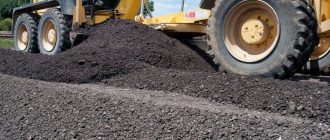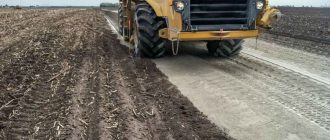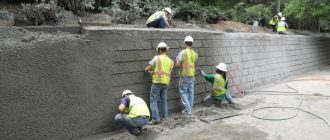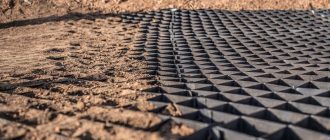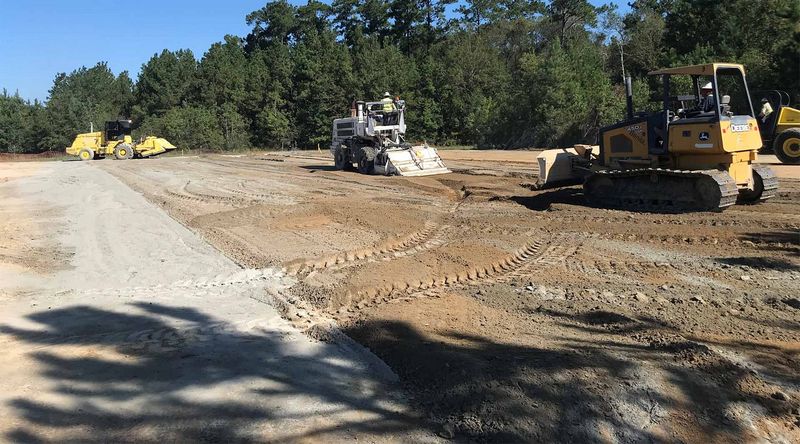
The Drawbacks of Lime Stabilization: A Comprehensive Analysis of its Limitations and Challenges
Lime stabilization is a common technique used in construction and engineering to improve the properties of soil and other materials. It involves adding lime to the soil to increase its strength, stability, and durability. While lime stabilization offers numerous benefits, it also has some disadvantages that should be considered.
One of the main disadvantages of lime stabilization is its high cost. Lime is relatively expensive, and the amount needed for stabilization can be significant, especially for large-scale projects. This can make lime stabilization a less cost-effective option compared to other soil improvement techniques.
Another disadvantage of lime stabilization is its environmental impact. The production of lime requires a significant amount of energy and releases carbon dioxide into the atmosphere. Additionally, the disposal of lime-treated soil can pose challenges, as it may need to be handled as hazardous waste due to its high pH level.
Furthermore, lime stabilization may not be suitable for all types of soil. Some soils, such as highly organic or highly plastic soils, may not respond well to lime treatment. In these cases, alternative soil stabilization methods may need to be considered.
Lastly, lime stabilization requires careful monitoring and quality control. The effectiveness of lime stabilization depends on factors such as the lime content, soil moisture, and curing time. Inadequate monitoring and quality control can result in poor stabilization, leading to potential structural failures.
In conclusion, while lime stabilization offers several benefits, it is important to consider its disadvantages. These include high cost, environmental impact, limited suitability for certain soil types, and the need for careful monitoring and quality control. By weighing these factors, engineers and construction professionals can make informed decisions regarding the use of lime stabilization in their projects.
Understanding the Limitations
While lime stabilization offers several advantages, it also has its limitations. It is important to understand these limitations before deciding to use lime stabilization for a particular project. Some of the key limitations include:
| 1. Inadequate Strength Gain | Lime stabilization may not provide the desired strength gain in all soil types. Certain clay soils, for example, may not experience significant improvement in strength even after lime treatment. |
| 2. Climate Sensitivity | Lime stabilization is highly dependent on climate conditions. Cold and wet weather can delay the curing process and reduce the effectiveness of lime treatment. |
| 3. Limitations in Organic Soil Treatment | Lime stabilization may not be effective in treating organic soils, as the high organic content can hinder the reaction between lime and soil particles. |
| 4. Cost Considerations | Implementing lime stabilization can be costly, especially for large-scale projects. The cost of lime and the equipment required for mixing and spreading it should be carefully evaluated. |
| 5. Environmental Impact | The use of lime in stabilization can have environmental implications. Lime is a caustic material and its disposal should be done in accordance with local regulations to minimize any negative impact on the environment. |
By understanding these limitations, engineers and project managers can make informed decisions regarding the feasibility and suitability of lime stabilization for their specific soil conditions and project requirements.
What Are the Disadvantages of Lime Stabilization?
Lime stabilization is a widely used technique for improving the engineering properties of soils. However, like any other method, it has its own set of disadvantages that must be considered before implementation.
| Disadvantage | Description |
|---|---|
| Cost | Lime stabilization can be expensive, especially for large-scale projects. The cost of lime and the equipment required for mixing and application can add significantly to the overall project cost. |
| Environmental Impact | The use of lime in soil stabilization can have environmental implications. Lime is a caustic material that can harm plants and animals if not handled properly. Additionally, the production of lime involves the release of carbon dioxide, contributing to greenhouse gas emissions. |
| Long-Term Performance | The long-term performance of lime-stabilized soils can be unpredictable. Factors such as weather conditions and variations in soil composition can affect the effectiveness of lime stabilization over time. This uncertainty can pose challenges for engineering design and construction. |
| Time Constraints | The lime stabilization process requires sufficient time for the lime to react with the soil and achieve the desired results. This can lead to project delays, especially in situations where time constraints are critical. |
| Limitations | Lime stabilization may not be suitable for all soil types. It works best with fine-grained soils such as clay and silt, but may not be as effective for coarse-grained soils like sand and gravel. The effectiveness of lime stabilization also depends on the initial soil properties and the desired engineering objectives. |
Despite these disadvantages, lime stabilization remains a valuable technique for improving soil properties and enhancing the performance of construction projects. However, it is important to carefully evaluate the specific conditions and requirements of each project before deciding to use lime stabilization.
Factors Impacting the Effectiveness of Lime Stabilization
1. Soil Type: The effectiveness of lime stabilization can vary depending on the type of soil being treated. Certain soil types, such as clay soils, may require higher lime dosages or additional additives to achieve the desired stabilization.
2. Lime Dosage: The amount of lime used in the stabilization process plays a crucial role in its effectiveness. Insufficient lime dosage may result in inadequate stabilization, while excessive lime dosage can lead to over-stabilization, causing the soil to become too brittle or prone to cracking.
3. Moisture Content: The moisture content of the soil can significantly impact lime stabilization. Dry soils may require additional water to achieve proper mixing and distribution of the lime, while overly wet soils may hinder the effectiveness of lime in binding the particles together.
4. Curing Time: The duration of the curing process after lime application is another factor that affects the effectiveness of lime stabilization. Adequate curing time allows for the chemical reactions between lime and soil to occur, resulting in improved soil strength and stability.
5. Environmental Conditions: Environmental factors, such as temperature and humidity, can influence the effectiveness of lime stabilization. Extreme weather conditions, such as freezing temperatures or heavy rainfall, can negatively impact the curing process and overall performance of lime-stabilized soil.
6. Quality of Lime: The quality of lime used in the stabilization process can also affect its effectiveness. High-quality lime with the appropriate chemical composition and particle size distribution is essential for achieving optimal stabilization results.
7. Construction Practices: The construction practices employed during lime stabilization can impact its effectiveness. Proper mixing, compaction, and curing techniques are crucial for ensuring that the lime is uniformly distributed and adequately bonded with the soil particles.
8. Cost Considerations: The cost of lime stabilization may be a factor that impacts its effectiveness, as higher lime dosages or additional additives can increase the overall project cost. It is important to balance the desired level of stabilization with the available budget.
Considering these factors and addressing them appropriately can help maximize the effectiveness of lime stabilization in various soil stabilization projects.
Carbonation in Lime-Stabilized Soils
One of the disadvantages of lime stabilization is the potential for carbonation in lime-stabilized soils. Carbonation occurs when carbon dioxide in the atmosphere reacts with the calcium hydroxide present in the lime, forming calcium carbonate.
This reaction can lead to a decrease in the pH level of the soil, which can have negative effects on its engineering properties. The decrease in pH can reduce the effectiveness of lime stabilization, as the soil may become less stable and lose its ability to resist erosion and withstand load-bearing.
Furthermore, carbonation can also result in a decrease in the lime’s ability to bind with the soil particles, reducing its overall effectiveness as a stabilizing agent. This can lead to a loss of strength and cohesion in the soil, making it more susceptible to deformation and settlement.
Carbonation is more likely to occur in lime-stabilized soils that are exposed to high levels of carbon dioxide, such as those in urban or industrial areas. It can also be accelerated in soils with a higher initial lime content or those that have been subjected to inadequate curing or drying conditions.
To mitigate the effects of carbonation, proper precautions should be taken during the lime stabilization process. This includes ensuring that the lime is evenly distributed throughout the soil and that adequate curing and drying time is provided. Additionally, the use of additives or alternative stabilization methods may be considered to minimize the risk of carbonation.
In conclusion, carbonation in lime-stabilized soils can be a significant disadvantage, as it can decrease the pH level, reduce the effectiveness of stabilization, and weaken the soil’s engineering properties. However, with proper precautions and management, the negative effects of carbonation can be minimized, allowing for successful lime stabilization of soils.
Causes and Process of Carbonation in Lime-Stabilized Soils
Carbonation is a natural process that occurs in lime-stabilized soils over time. It is caused by the reaction between carbon dioxide (CO2) in the atmosphere and the free lime (calcium hydroxide) present in the soil. This reaction leads to the formation of calcium carbonate, which is a stable compound.
There are several factors that contribute to the carbonation process in lime-stabilized soils. Firstly, the presence of moisture is essential for the reaction to occur. Moisture allows the carbon dioxide to dissolve and react with the lime particles in the soil. Therefore, in dry conditions, carbonation is less likely to occur.
The carbonation process starts at the surface of the lime-stabilized soil and gradually penetrates deeper into the soil over time. This is because carbon dioxide can diffuse through the soil pores and react with the lime particles. The rate of carbonation depends on various factors, such as the porosity of the soil, the concentration of carbon dioxide in the atmosphere, and the temperature.
During the carbonation process, the pH of the soil decreases due to the formation of calcium carbonate. This can lead to a reduction in the soil’s alkalinity, which may affect the stability and engineering properties of the lime-stabilized soil. Additionally, the carbonation process can also lead to the formation of cracks and fissures in the soil, which may reduce its strength and durability.
To minimize the effects of carbonation in lime-stabilized soils, proper design and construction techniques should be followed. This may include using appropriate lime content, compacting the soil properly, and protecting the stabilized soil from excessive moisture and carbon dioxide exposure.
In conclusion, carbonation is a natural process that occurs in lime-stabilized soils due to the reaction between carbon dioxide and lime. It can affect the alkalinity, strength, and durability of the soil. Therefore, proper precautions should be taken during the design and construction of lime-stabilized soil to minimize the negative effects of carbonation.
Effects of Carbonation on Soil Properties
Carbonation is a natural process that occurs when carbon dioxide (CO2) reacts with certain minerals in the soil, forming carbonates. This process can have both positive and negative effects on soil properties.
Positive effects:
1. Increased soil stability: Carbonation can enhance the stability of soil particles by cementing them together. This can improve the overall strength and cohesion of the soil, making it less prone to erosion.
2. Improved drainage: Carbonation can create pore spaces within the soil, allowing for better water movement and drainage. This can help prevent waterlogging and improve soil aeration, which is beneficial for plant root growth.
3. Reduced soil acidity: Carbonation can neutralize acidic soils by reacting with acidic compounds and increasing the pH level. This can create a more favorable environment for plant growth and nutrient uptake.
Negative effects:
1. Loss of soil fertility: Carbonation can lead to the leaching of essential nutrients, such as calcium, magnesium, and potassium, from the soil. This can result in reduced soil fertility and negatively impact plant growth and productivity.
2. Decreased soil permeability: Excessive carbonation can lead to the formation of compacted layers, reducing soil permeability and water infiltration. This can result in water runoff and increased risk of erosion.
3. Formation of carbonate crust: Carbonation can sometimes result in the formation of a hard carbonate crust on the soil surface. This crust can limit water infiltration and seed germination, hampering plant growth.
In conclusion, carbonation can have both positive and negative effects on soil properties. While it can improve soil stability, drainage, and reduce acidity, it can also result in loss of fertility, decreased permeability, and formation of carbonate crust. It is important to consider these effects when assessing the suitability of lime stabilization for soil improvement.
Sulfate Attack in Lime-Stabilized Soils
One of the potential disadvantages of lime stabilization is the risk of sulfate attack in the stabilized soils. Sulfate attack refers to the reaction between sulfates in the soil and the lime, leading to the formation of expansive compounds. This can result in the swelling and cracking of the soil, compromising its stability and structural integrity.
Sulfate attack is particularly problematic in areas with high sulfate content in the soil or water, such as coastal regions or areas with high groundwater tables. The presence of sulfates can react with the lime, leading to the formation of ettringite, a mineral compound that can cause significant expansion and damage to the soil.
Furthermore, sulfate attack can also lead to the deterioration of lime-stabilized structures or pavement. The expansive compounds formed due to sulfate attack can exert pressure on the surrounding materials, leading to cracking, spalling, and ultimately, structural failure.
To mitigate the risk of sulfate attack, it is important to carefully assess the suitability of lime stabilization in sulfate-rich environments. Alternative stabilization methods, such as cement stabilization, may be more appropriate in these cases. Additionally, proper design and construction techniques, including the use of appropriate additives and moisture control, can help minimize the risk of sulfate attack in lime-stabilized soils.
In conclusion, sulfate attack is a potential disadvantage of lime stabilization, particularly in areas with high sulfate content. Proper assessment, design, and construction techniques are essential to mitigate the risk and ensure the long-term stability of lime-stabilized soils and structures.
How Sulfate Attack Occurs in Lime-Stabilized Soils
Sulfate attack is a phenomenon that can occur in lime-stabilized soils, which can lead to a reduction in the strength and durability of the soil. It is caused by the reaction between sulfates present in the soil and the lime used for stabilization.
When sulfates are present in the soil, they can react with the calcium hydroxide (lime) to form calcium sulfate. This reaction takes place in the presence of moisture, which is why sulfate attack is more common in moist environments.
The formation of calcium sulfate can lead to the expansion of the soil particles, which can cause cracking and deterioration of the soil structure. This can result in reduced load-bearing capacity and increased permeability of the soil.
In addition to the physical effects, sulfate attack can also have chemical effects on the soil. The formation of calcium sulfate can result in the leaching of other important minerals, such as calcium and magnesium, from the soil. This can further weaken the soil and reduce its fertility.
It is important to note that not all lime-stabilized soils are susceptible to sulfate attack. The presence of sulfates in the soil, as well as other factors such as the type and amount of lime used, the moisture content, and the environmental conditions, can all influence the likelihood and severity of sulfate attack.
| Factors Influencing Sulfate Attack | Potential Effects |
|---|---|
| Sulfate content in soil | Expansion of soil particles, cracking, reduced load-bearing capacity |
| Type and amount of lime used | Varying degrees of reactivity with sulfates |
| Moisture content | Increased likelihood of sulfate reaction |
| Environmental conditions | Temperature, pH, and other factors can affect the severity of sulfate attack |
To mitigate the risk of sulfate attack, it is important to carefully analyze and assess the soil conditions before using lime stabilization. This can involve testing for sulfates in the soil, as well as considering other factors that may influence the reactivity of the soil with lime.
Overall, while lime stabilization can offer many benefits for soil improvement, it is important to be aware of the potential disadvantages, such as sulfate attack. By understanding how sulfate attack occurs and taking appropriate measures to mitigate the risk, the negative effects can be minimized, allowing for successful and durable lime-stabilized soil projects.
Mitigating Sulfate Attack
Sulfate attack is a common problem that can occur when lime stabilization is used. Sulfate ions present in the soil can react with the hydrated lime, forming ettringite, which can lead to the deterioration of the stabilized material.
To mitigate sulfate attack, several measures can be taken:
1. Selection of appropriate lime type: Different types of lime have different sulfate resistance. It is important to select a lime type that has a high sulfate resistance to minimize the risk of sulfate attack.
2. Proper mix design: The mix design should be carefully considered to ensure that the amount of lime used is sufficient to provide the desired stabilization, but not excessive. Excessive lime can increase the risk of sulfate attack.
3. Minimize sulfate exposure: The exposure of the stabilized material to sulfate ions should be minimized. This can be achieved by providing proper drainage and preventing the infiltration of sulfate-rich water into the stabilized material.
4. Monitoring and maintenance: Regular monitoring of the stabilized material is important to detect any signs of sulfate attack. If sulfate attack is detected, appropriate maintenance measures should be taken to prevent further deterioration.
By implementing these measures, the risk of sulfate attack can be mitigated, and the performance and durability of the lime-stabilized material can be enhanced.
Environmental Impact
Lime stabilization can have negative environmental impacts if not properly managed. One of the main concerns is the potential for leaching of lime into groundwater and surface water sources. Lime is a highly alkaline substance, and if it is not properly contained, it can raise the pH levels of water, making it unsuitable for aquatic ecosystems and drinking water supplies.
Additionally, lime stabilization can result in the release of greenhouse gases. When lime is applied to soil, it reacts with carbon dioxide in the atmosphere to form calcium carbonate, a process known as carbonation. This reaction releases carbon dioxide into the air, contributing to climate change.
The use of lime stabilization can also impact soil health and fertility. Lime can alter the pH levels of soil, making it less suitable for certain types of vegetation. This can lead to a decrease in biodiversity and the loss of valuable plant species.
Furthermore, the transportation and production of lime can have negative environmental impacts. Lime is typically produced through the mining and processing of limestone, which can result in habitat destruction and the release of pollutants into the air and water.
To mitigate these environmental impacts, proper containment and management practices must be implemented when using lime stabilization. This includes ensuring that lime is applied in appropriate quantities, preventing runoff and leaching, and properly disposing of any excess lime or lime-contaminated materials.
In conclusion, while lime stabilization can be an effective method for improving soil stability and reducing the risk of soil erosion, it is important to consider and address its potential environmental impacts. By implementing appropriate management practices, the negative effects of lime stabilization can be minimized, and its benefits can be maximized.
Environmental Considerations in Lime Stabilization
Lime stabilization, while providing numerous benefits for soil and construction projects, also comes with certain environmental considerations that need to be taken into account. It is important to understand and address these concerns to ensure the proper and responsible use of lime stabilization techniques.
1. pH Levels: Lime stabilization can significantly increase the pH levels of the treated soil. While this can be beneficial for improving soil properties, it can also have adverse effects on surrounding vegetation and aquatic ecosystems. Careful monitoring and management of pH levels is essential to minimize any potential negative impacts.
2. Nutrient Levels: Lime stabilization can alter the nutrient composition of the soil, potentially affecting the balance of essential elements for plant growth. Excessive lime application can lead to nutrient imbalances, which may limit the growth of certain plant species. It is important to conduct soil testing and adjust lime application rates accordingly to prevent nutrient deficiencies or excesses.
3. Heavy Metal Contamination: In some cases, lime stabilization may result in the release of heavy metals from the soil. These metals can pose a risk to human health and the environment if they enter water bodies or contaminate groundwater. Proper testing and analysis of soil samples are necessary to identify any potential heavy metal contamination and take appropriate remediation measures.
4. Dust Generation: Lime stabilization involves the use of powdered lime, which can generate dust during the mixing and application process. Inhalation of lime dust can have respiratory effects on workers and nearby residents. Dust control measures, such as wetting the lime or using dust suppression techniques, should be implemented to minimize dust generation and protect air quality.
5. Waste Disposal: Lime stabilization can generate waste materials, such as lime sludge or excess lime. Proper disposal of these waste materials is crucial to prevent environmental contamination. Responsible disposal methods, such as recycling or proper landfilling, should be employed to ensure the safe management of lime stabilization by-products.
By addressing these environmental considerations and implementing appropriate mitigation measures, lime stabilization can be carried out in an environmentally responsible manner, minimizing any potential negative impacts on ecosystems and human health.
Sustainability Concerns
Lime stabilization is not without its sustainability concerns. Some of the main concerns include:
- Emission of greenhouse gases: The production of lime involves the release of carbon dioxide (CO2) emissions, contributing to global warming and climate change.
- Energy consumption: The production process of lime requires a significant amount of energy, which often comes from non-renewable sources.
- Resource depletion: The extraction of limestone, the primary source of lime, can lead to the depletion of natural resources.
- Water pollution: The use of lime stabilization may result in the leaching of lime into water bodies, which can disrupt aquatic ecosystems and harm aquatic life.
- Land use: Large-scale lime production facilities require a significant amount of land, which can lead to habitat destruction and loss of biodiversity.
These sustainability concerns highlight the need for alternative stabilization methods that have a lower environmental impact and are more sustainable in the long run.
Long-Term Lime Reactivity
One of the disadvantages of lime stabilization is the long-term reactivity of lime. Lime is a highly reactive material that can continue to react with soil over time, leading to changes in its properties. This can result in a decrease in the strength and stability of the stabilized soil.
Over time, the lime can undergo further chemical reactions with water and carbon dioxide in the atmosphere, resulting in the formation of secondary minerals. These secondary minerals can have different properties than the original lime, and may not provide the same level of stabilization.
Additionally, the long-term reactivity of lime can lead to the leaching of lime from the stabilized soil. This can result in a decrease in the lime content of the soil, further reducing its strength and stability. Leaching can occur due to water infiltration or changes in the soil’s pH.
Overall, the long-term reactivity of lime can be a disadvantage of lime stabilization, as it can lead to changes in the properties of the stabilized soil and a decrease in its strength and stability.
Concerns About the Long-Term Reactivity of Lime-Stabilized Soils
One of the main concerns associated with lime stabilization is the long-term reactivity of the treated soils. While lime is often used as a stabilizing agent due to its ability to improve the engineering properties of soils, there are some potential drawbacks that need to be considered.
Firstly, lime-stabilized soils can experience a phenomenon known as carbonation. Over time, carbon dioxide from the atmosphere can react with the lime in the soil, causing it to lose its effectiveness as a stabilizer. This can lead to a decrease in the strength and durability of the treated soil, ultimately impacting the long-term performance of the stabilized material.
Furthermore, the reactivity of lime-stabilized soils can also be influenced by factors such as moisture and temperature. Changes in these environmental conditions can affect the chemical reactions that occur within the soil, potentially leading to a loss of stabilization over time. This is particularly concerning in regions with fluctuating weather patterns, as the soil’s responsiveness to lime treatment may vary throughout the year.
Another concern is the potential for long-term leaching of lime from the stabilized soil. Depending on the soil composition and the amount of lime used, it is possible for the lime to gradually leach out of the soil over time. This can not only reduce the effectiveness of the stabilization, but it can also have environmental implications if the leached lime enters nearby water sources.
Overall, while lime stabilization can offer numerous benefits in terms of soil improvement, it is important to be aware of the potential long-term reactivity issues. Proper monitoring and maintenance of lime-stabilized soils are essential to ensure their continued performance and sustainability.
Monitoring and Preventing Long-Term Issues
While lime stabilization offers several advantages in terms of improving soil properties and reducing environmental impact, there are also some long-term issues that need to be carefully monitored and prevented to ensure the success of the stabilization process.
One of the main concerns with lime stabilization is the potential for the formation of efflorescence. Efflorescence refers to the white powdery substance that can be seen on the surface of lime-treated soils. This can occur due to the reaction between lime and water, resulting in the deposition of calcium carbonate on the surface. Efflorescence not only affects the aesthetic appearance of the stabilized soil but can also reduce the effectiveness of lime stabilization over time. To prevent efflorescence, it is important to ensure proper drainage and avoid excessive moisture in the soil.
Another long-term issue that needs to be monitored is the potential for lime leaching. Lime is known to be water-soluble, which means that it can be washed away over time by rainfall or irrigation water. This can lead to a decrease in lime content in the soil, reducing its stabilizing properties. To prevent lime leaching, it is important to regularly monitor the lime content in the soil and apply additional lime as needed.
Furthermore, the long-term durability of lime-stabilized soils should be carefully monitored. While lime stabilization can significantly improve the strength and durability of soils, it is important to regularly assess the performance of the stabilized soil over time. This can be done through various testing methods, such as compaction tests, California bearing ratio (CBR) tests, and shear strength tests. By monitoring the performance of the stabilized soil, any potential issues or deterioration can be identified and addressed promptly.
In conclusion, while lime stabilization offers numerous benefits, it is crucial to monitor and prevent long-term issues such as efflorescence, lime leaching, and durability problems. Regular monitoring and maintenance can help ensure the long-term success of lime stabilization projects and maximize the benefits of this soil improvement technique.
Impact on Soil Workability
Lime stabilization can have a significant impact on the workability of soil. The addition of lime to soil can alter its physical properties, making it more difficult to work with.
One of the main effects of lime stabilization on soil workability is the increase in stiffness and decrease in plasticity. Lime reacts with the clay minerals in the soil, causing them to become more rigid and less malleable. This can make it challenging to shape and compact the soil, especially for construction purposes.
Furthermore, lime stabilization can also lead to a decrease in moisture content and an increase in dry density. This can result in a harder and more compacted soil, which may be more difficult to excavate or penetrate with machinery.
Additionally, the increased stiffness and reduced plasticity of lime-stabilized soil can also affect its permeability. Lime can reduce the pore size and increase the overall density of the soil, leading to decreased water infiltration and drainage. This can have implications for the soil’s ability to support vegetation and the overall health of the ecosystem.
Overall, while lime stabilization can offer benefits such as improved strength and durability, it is important to consider its potential impact on soil workability. Proper assessment and testing should be conducted to determine the suitability of lime stabilization for a specific project, taking into account the desired workability requirements and the potential limitations of the technique.
How Lime Stabilization Can Negatively Affect Soil Workability
Lime stabilization, while offering several benefits for soil improvement, can also have negative effects on soil workability. These drawbacks should be taken into consideration when deciding whether to use lime stabilization or explore alternative methods.
One of the main disadvantages of lime stabilization is its impact on the plasticity of soil. Lime, when added to soil, chemically reacts with clay minerals and reduces their plasticity. This can make the soil harder to work with and less malleable, making it challenging to shape and compact. In construction projects that require precise grading and compaction, this loss of workability can be a significant drawback.
Furthermore, lime stabilization can lead to an increase in soil stiffness. While this can be advantageous in some cases, such as when dealing with soft or unstable soils, it can also make the soil more difficult to excavate or penetrate. This can pose challenges when conducting underground utility installations or other activities that require digging or drilling into the ground.
Another negative effect of lime stabilization is the potential for increased drying shrinkage. Lime-treated soils tend to have higher shrink-swell potential, which can lead to cracking and settlement issues. This can be problematic for structures built on lime-stabilized soil, as it can compromise their stability and longevity.
Additionally, lime stabilization can have adverse effects on soil fertility. Lime is alkaline in nature and can raise the pH level of the soil. This can alter the nutrient availability and affect the growth of certain plants. In agricultural applications, this can be a significant drawback as it may limit the types of crops that can be grown in lime-stabilized soil.
Overall, while lime stabilization offers benefits such as improved strength and durability, it is important to consider its potential negative effects on soil workability. Proper evaluation of the project requirements, soil characteristics, and alternative stabilization methods is crucial to ensure the most suitable approach is chosen.
| Disadvantage | Effect |
|---|---|
| Reduces plasticity | Harder to shape and compact |
| Increases soil stiffness | Difficult to excavate or penetrate |
| Higher drying shrinkage | Cracking and settlement issues |
| Alters soil fertility | Affects nutrient availability and plant growth |
Mitigation Measures for Workability Issues
When using lime stabilization, workability issues can arise that affect the ease of handling and compacting the material. These issues can include difficulties in achieving the desired moisture content, poor distribution of lime, and inadequate mixing.
To mitigate these workability issues, several measures can be taken:
| Measure | Description |
|---|---|
| Proper moisture control | It is important to carefully monitor and control the moisture content of the material during the lime stabilization process. This can be achieved by conducting regular moisture tests and adjusting the water content accordingly. |
| Thorough mixing | Ensuring that the lime is evenly distributed throughout the material is crucial for effective stabilization. This can be achieved by using appropriate mixing equipment and techniques, such as rotary mixers or pug mills. |
| Optimal lime dosage | Applying the correct amount of lime is essential for achieving the desired stabilization results. It is important to determine the optimal lime dosage based on the specific characteristics of the material and the intended application. |
| Proper curing | After the lime stabilization process, proper curing is necessary to allow the lime to react with the material and achieve the desired strength. This can be achieved by covering the stabilized material with a curing blanket or using a curing compound. |
| Regular quality control | Regularly monitoring the quality of the stabilized material is important to ensure that the desired stabilization results are being achieved. This can be done through laboratory testing and field inspections. |
By implementing these mitigation measures, workability issues associated with lime stabilization can be effectively addressed, resulting in improved handling and compaction of the material.
Q&A:
What is lime stabilization?
Lime stabilization is a process in which lime is added to soil or other materials to improve their properties and enhance their strength and durability.
What are the disadvantages of lime stabilization?
While lime stabilization has its benefits, there are also several disadvantages to consider. One disadvantage is that lime can be expensive, especially if large quantities are required for a project. Additionally, lime stabilization may not be effective in all soil types, and its effectiveness can vary depending on factors such as moisture content and compaction. Another disadvantage is that lime can have a negative impact on the environment if not properly managed, as it can release harmful pollutants into the air and water.
Is lime stabilization a sustainable solution?
Lime stabilization can be considered a sustainable solution in some cases. Lime is a natural material and can be locally sourced, reducing transportation costs and carbon emissions. It can also be used to recycle and reuse materials such as industrial by-products or construction waste. However, it is important to carefully assess the environmental impact of lime stabilization and ensure proper management of lime-treated materials to minimize any negative effects.
Are there any alternatives to lime stabilization?
Yes, there are several alternatives to lime stabilization. One alternative is cement stabilization, which involves adding cement to soil to improve its properties. Cement stabilization can provide similar benefits to lime stabilization, but it may have different cost considerations and environmental impacts. Other alternatives include using geosynthetics or other mechanical stabilization techniques to improve soil properties, or using alternative construction methods that do not require soil stabilization.
What factors should be considered when deciding whether to use lime stabilization?
Several factors should be considered when deciding whether to use lime stabilization. These factors include the type and condition of the soil or material being stabilized, the desired properties and performance requirements, the availability and cost of lime, the environmental impact of lime stabilization, and any regulatory or permitting requirements. It is also important to consider the expertise and experience of the project team in implementing lime stabilization, as proper design, testing, and construction techniques are crucial for successful outcomes.
What is lime stabilization and how does it work?
Lime stabilization is a process in which lime is added to soil or aggregate material to improve its engineering properties. Lime reacts with the soil particles, causing them to bind together and create a stable base or subgrade. This process is commonly used in road construction and other civil engineering projects.
What are the disadvantages of lime stabilization?
Lime stabilization has several disadvantages. Firstly, it can be expensive, as the cost of lime and the equipment required for mixing can add up. Secondly, lime stabilization is not suitable for all soil types. It works best on clayey soils, but may not be as effective on sandy or gravelly soils. Additionally, lime stabilization can have long-term environmental impacts, as lime is a caustic material that can affect the pH balance of the soil and surrounding water sources. Finally, lime stabilization can be time-consuming, as it requires proper testing and monitoring to ensure the correct lime dosage is applied.


